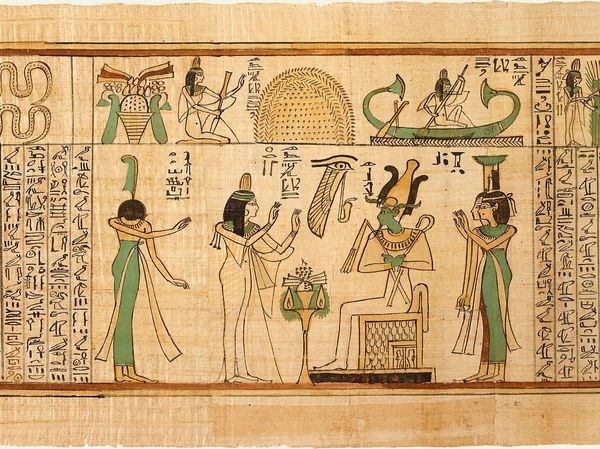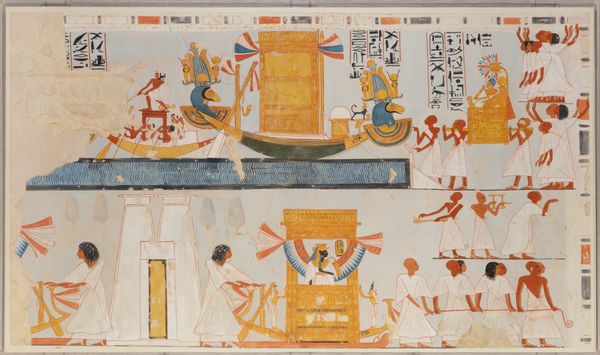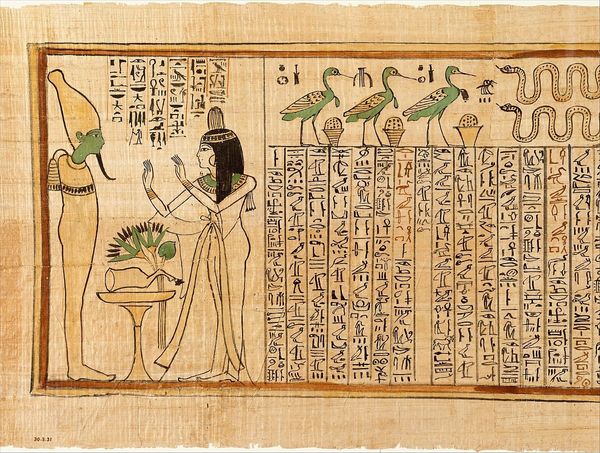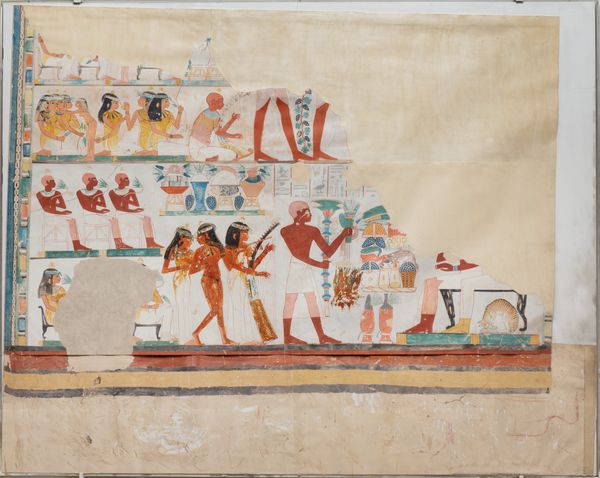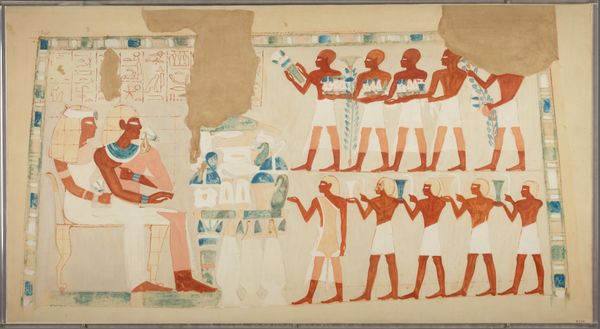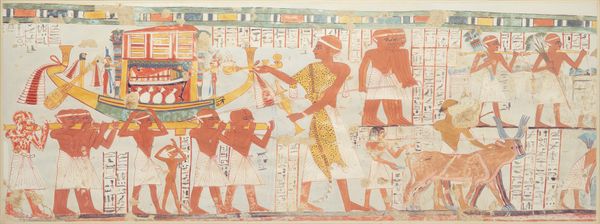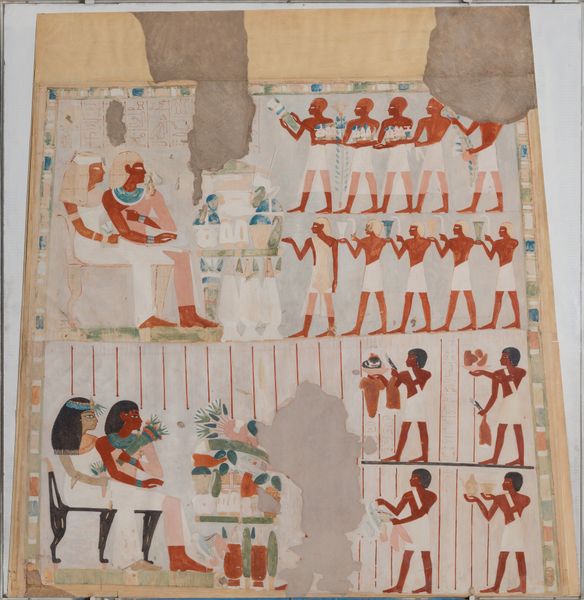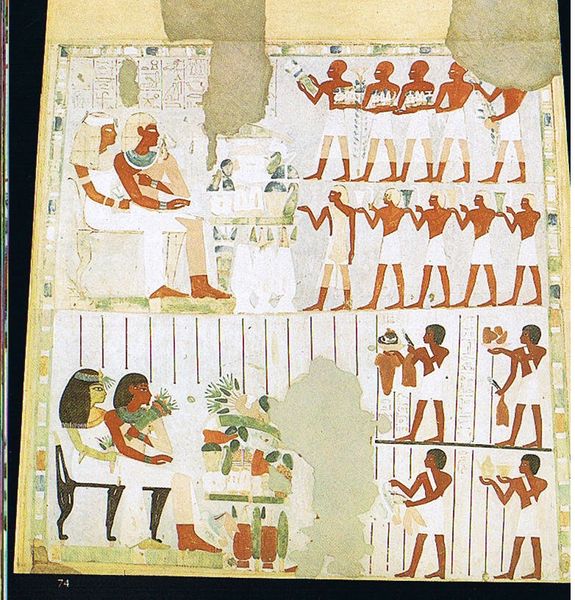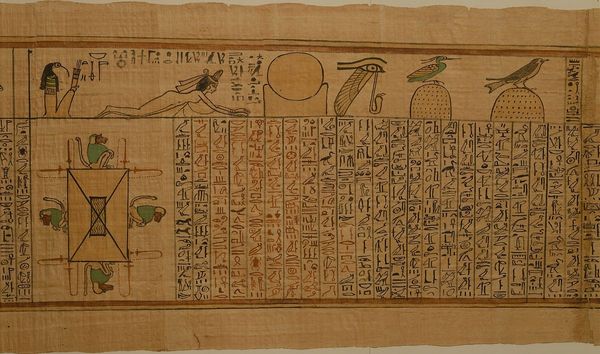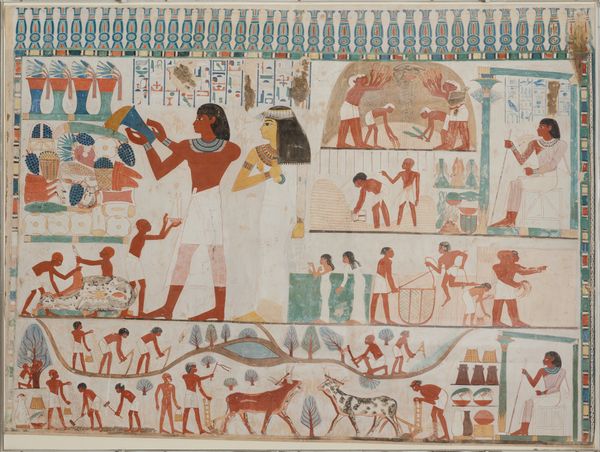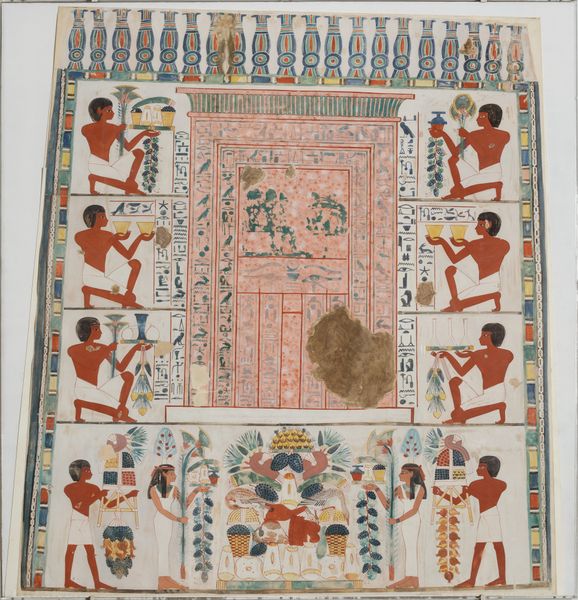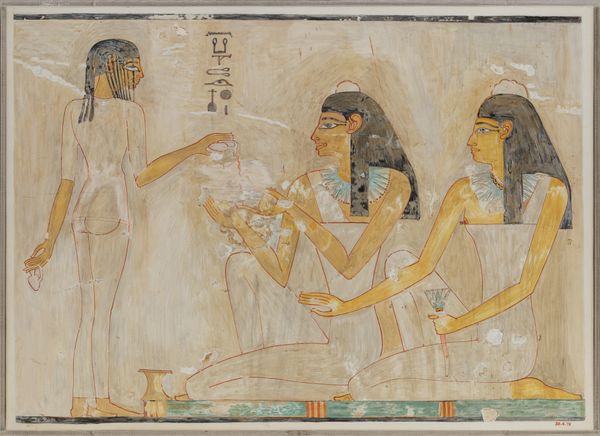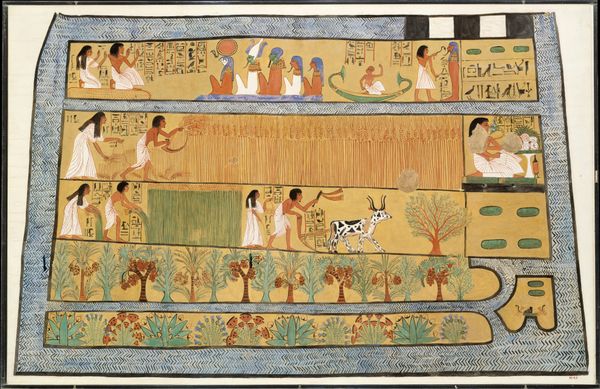
Weighing of the Heart (Book of the Dead for the Singer of Amun, Nany) 1050 BC
0:00
0:00
painting
#
allegory
#
narrative-art
#
painting
#
ancient-egyptian-art
#
ancient-mediterranean
#
history-painting
#
miniature
Copyright: Public domain
This painted papyrus is part of the Book of the Dead of Nany, a singer in the temple of Amun, and it was made in ancient Egypt sometime before 640 AD. We see the ceremony of the weighing of the heart, a key moment in the ancient Egyptian conception of the afterlife. Nany's heart, the seat of her being, is weighed against Maat, the feather of truth. If her heart is lighter than the feather, she can pass into the afterlife. This imagery reflects the hierarchical nature of Egyptian society, where moral worth was tied to one’s social standing and adherence to religious doctrine. It highlights the institutional role of religion in ancient Egypt, where temples like that of Amun were centers of economic and political power. The image creates meaning through the use of visual codes, cultural references, and historical associations. The hieroglyphs tell the story of Nany’s journey into the afterlife and her preparation for the judgment before Osiris. Understanding this image relies on extensive historical research and knowledge of ancient Egyptian religion, language, and society, reminding us that the meaning of art is deeply rooted in its social and institutional context.
Comments
No comments
Be the first to comment and join the conversation on the ultimate creative platform.
